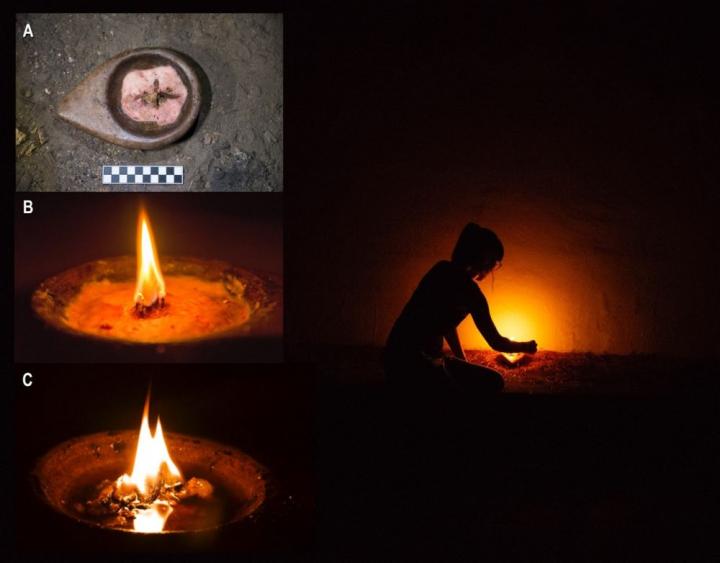Scientists reconstruct cave lighting systems used by early humans
Study analyses archaeological evidence of lighting found across several European Paleolithic caves

Scientists have recreated the three common types of lighting systems – torches, grease lamps, and fireplaces – used by stone age humans to illuminate their caves — an advance which sheds light on how Paleolithic people might have traveled, lived, and created art in the depths of their caves.
According to archaeologists, including MªÁngeles Medina Alcaide from the University of Cantabria in Spain, each of the different lighting systems had diverse features, and their use was a crucial resource for expanding the social and economic behaviour in prehistoric people hundreds of thousands of years ago.
In the study, published in the journal PLOS ONE, scientists analysed archaeological evidence of lighting remains such as combustion residues found across several Paleolithic caves featuring cave art in southwest Europe.
Based on the findings, they experimentally replicated the lighting systems likely used by the original cave dwellers at Isuntza 1 Cave in the Basque region of Spain.
“The experiments are based on an exhaustive review of archaeological information about this topic,” the scientists wrote in the study.
The replicated lighting included five wooden torches – made variably from ivy, juniper, oak, birch, and pine resins – two stone lamps using animal fat, bone marrow from cow and deer, and a small fireplace burning oak and juniper wood.
The archaeologists found that the wooden torches made of multiple sticks worked best for exploring caves or crossing wide spaces, since they projected light in all directions – up to almost six meters in the experiments – and were easy to transport.
According to the scientists, the wooden torches also didn’t “dazzle the torchbearer” despite having a light intensity almost five times greater than a double-wicked grease lamp.
The light from these wooden torches, made the way Paleolithic humans likely did, lasted for an average of 41 minutes in this study, with the shortest-lived torch burning 21 minutes, and the longest burning 61 minutes, the study noted.
However, the researchers found that these torches functioned irregularly, requiring close supervision when burning, and also produced large quantities of smoke.
In contrast, they said grease lamps worked best for lighting small spaces over a long period with a light intensity similar to a candle, lighting up to three meters, while also producing less smoke.
But the scientists added that these lamps weren’t well-suited for transit due to their dazzling effect and poor floor illumination.
Air currents inside caves could have influenced the location of fireplaces, the study suggests, which burned very smokily and was extinguished after 30 minutes in the research.
The archaeologists believe the insights and observations gained from their experimental replications can provide a deeper understanding of what it may have been like to access the darkest parts of inhabited caves, especially in order to create art.
According to the researchers, future experiment-based lighting studies will be useful in unravelling more details about our ancestors’ activities in their caves.
“The artificial lighting was a crucial physical resource for expanding complex social and economic behaviour in Paleolithic groups, especially for the development of the first palaeo-speleological explorations and for the origin of art in caves,” the researchers wrote.
Join our commenting forum
Join thought-provoking conversations, follow other Independent readers and see their replies
Comments
Bookmark popover
Removed from bookmarks